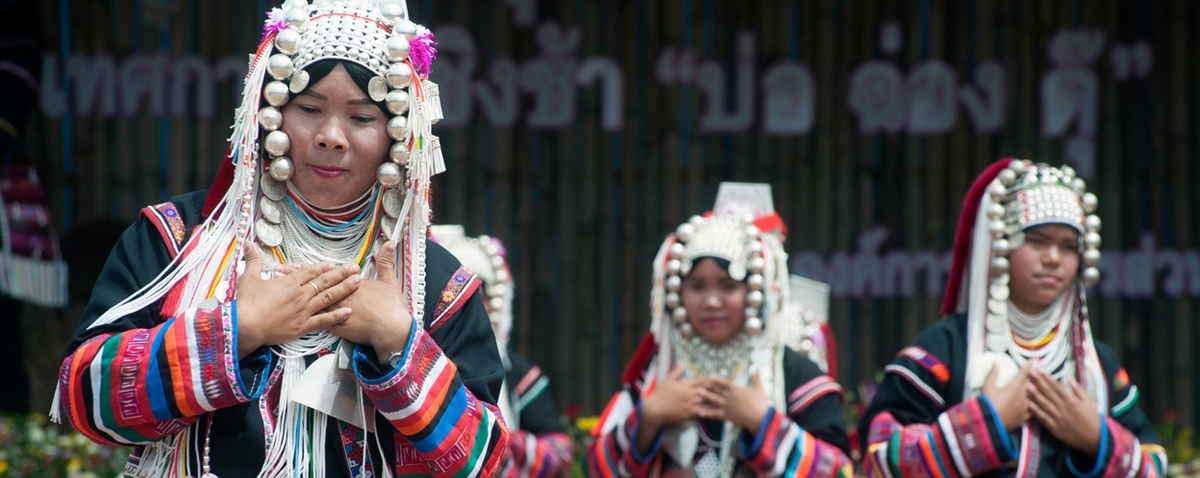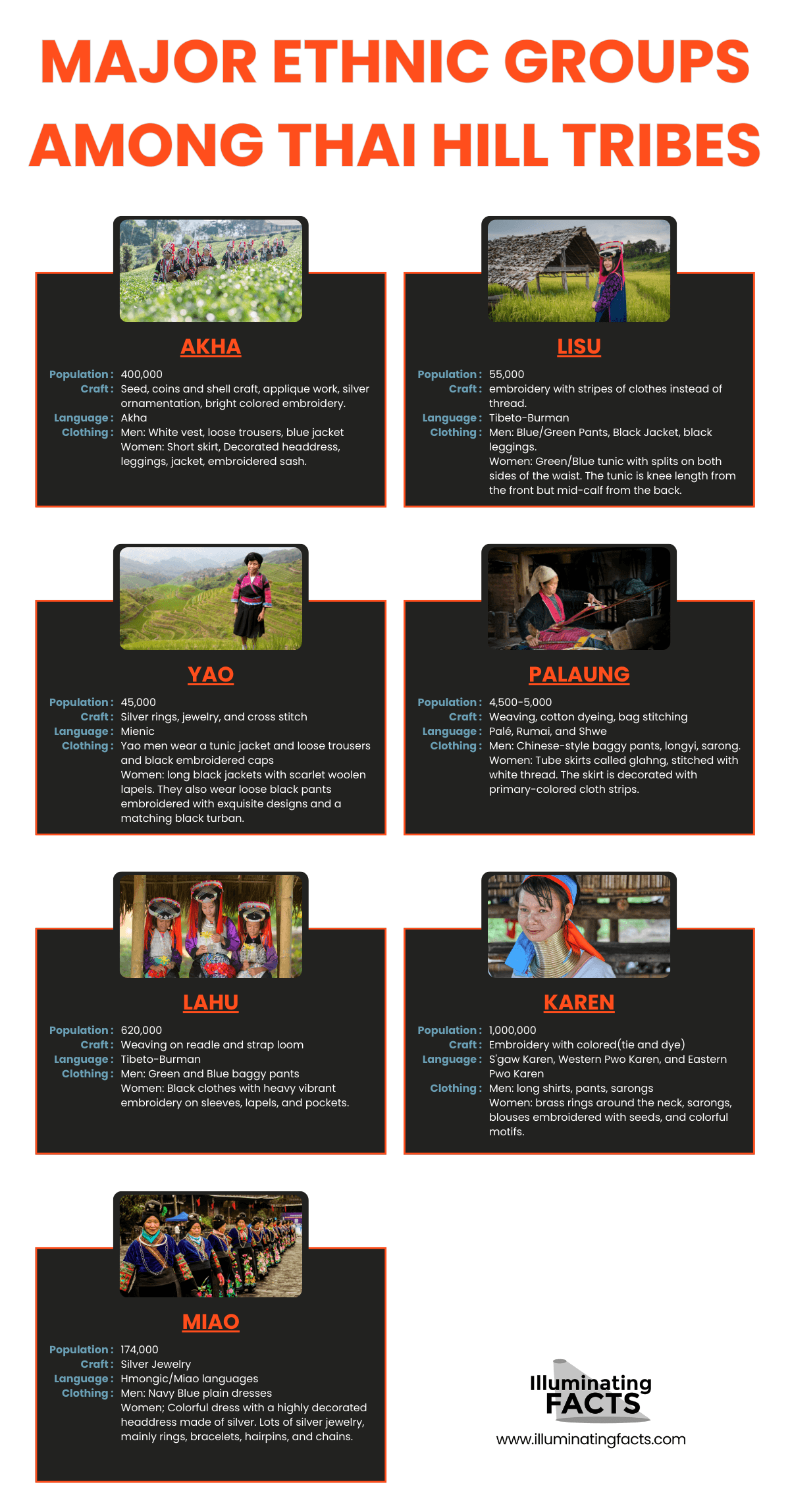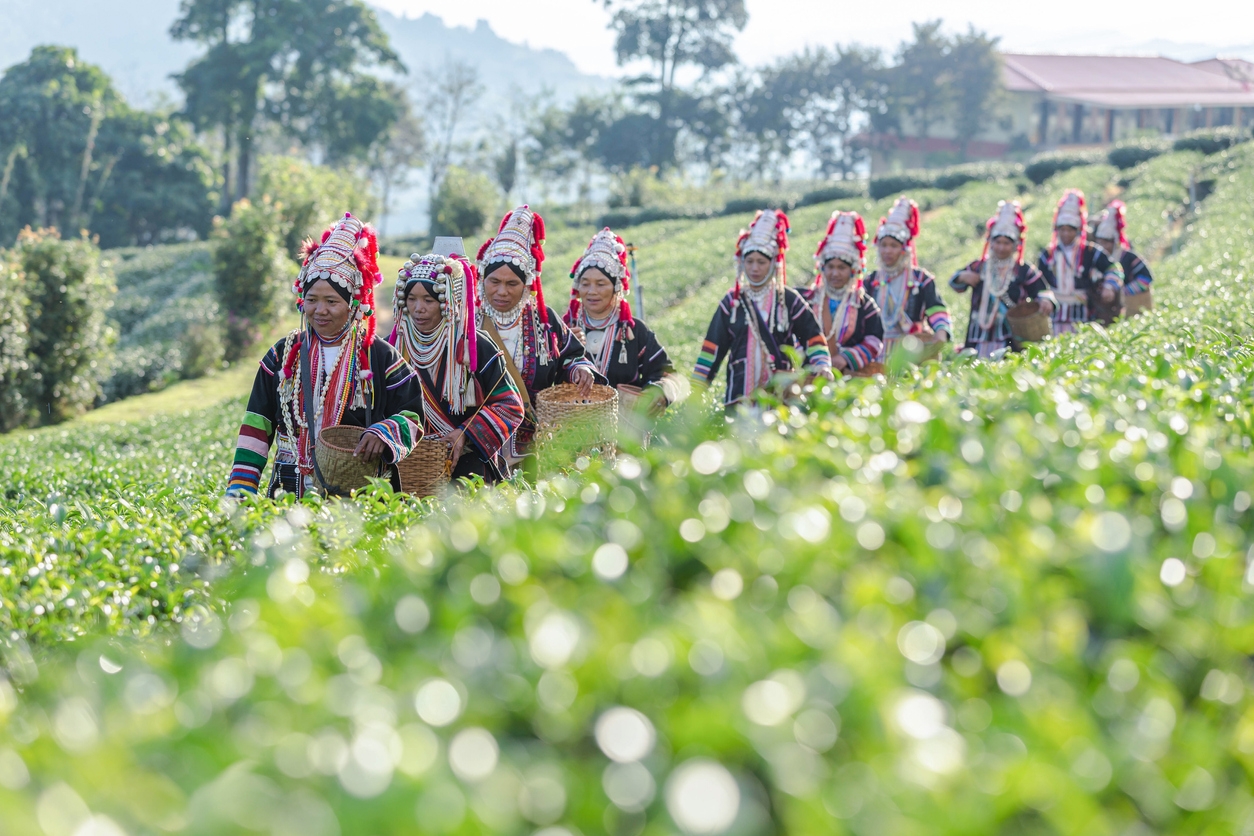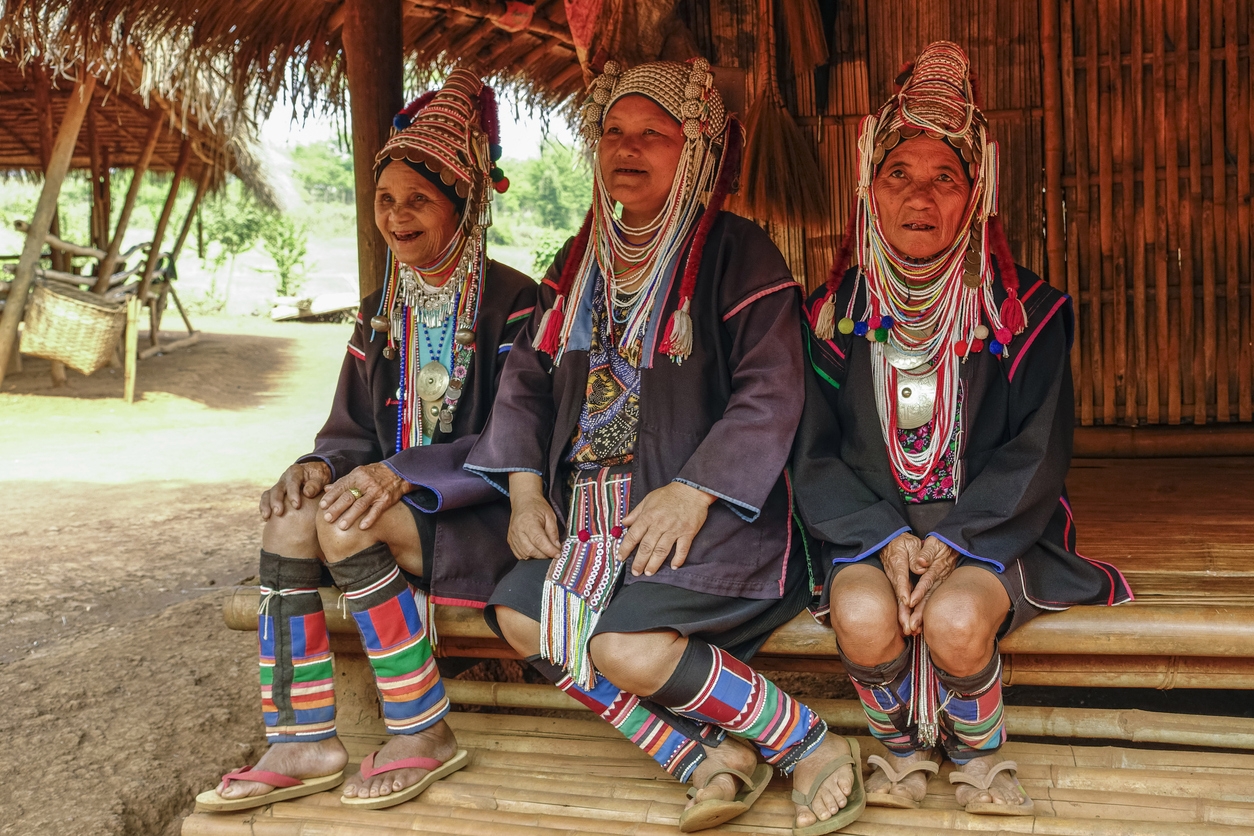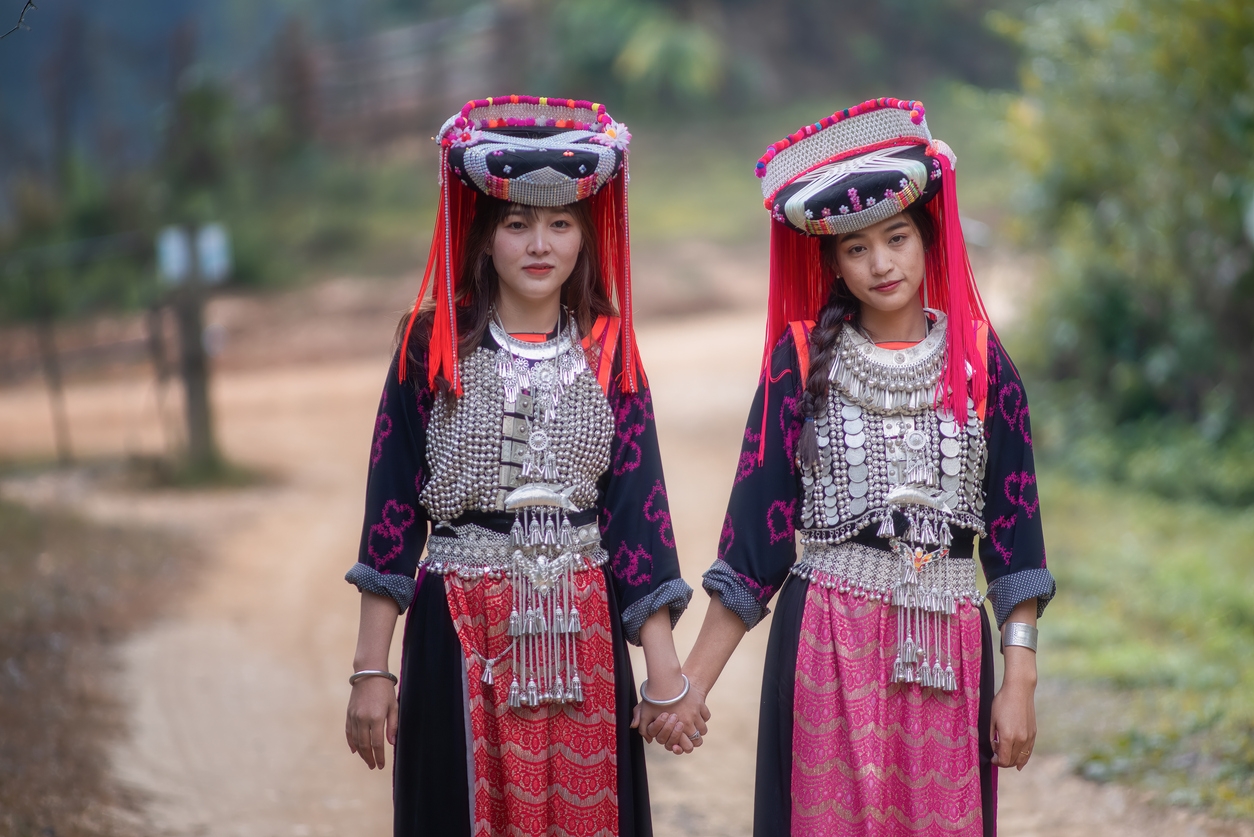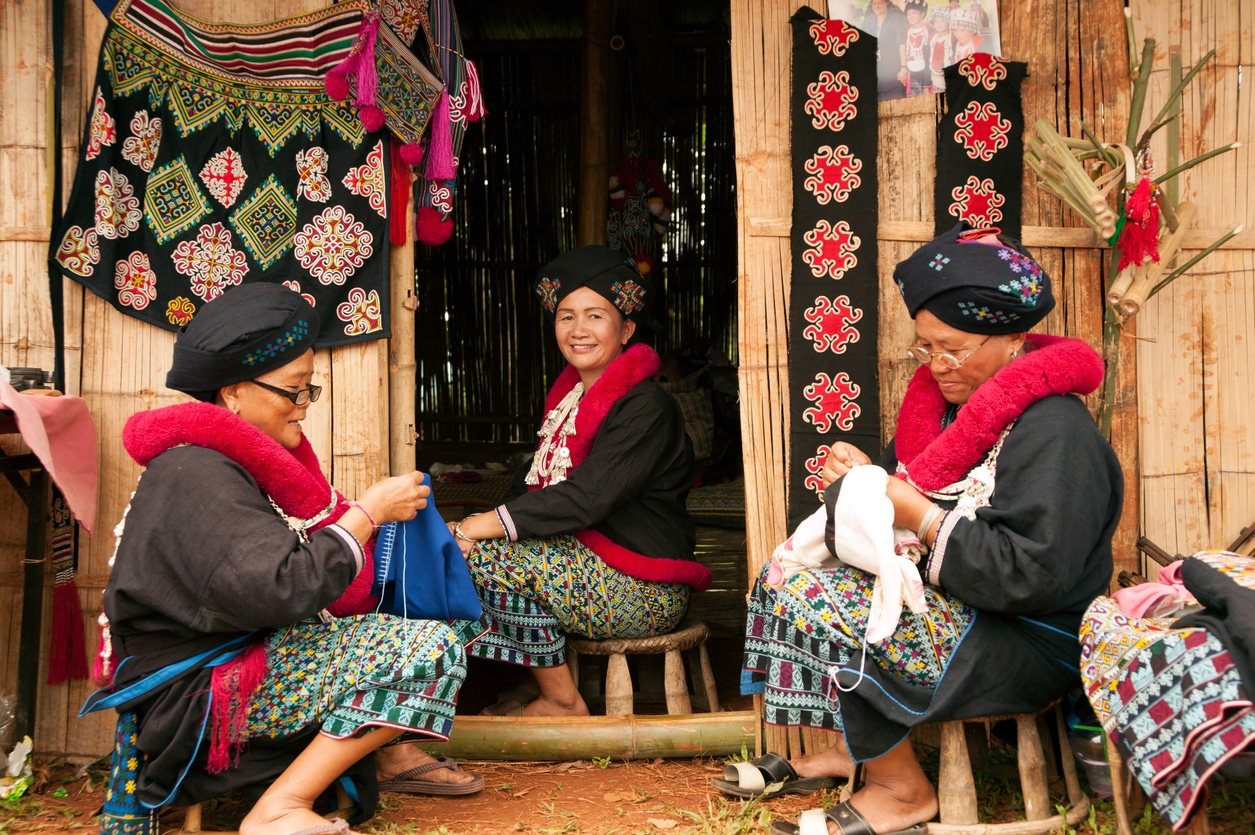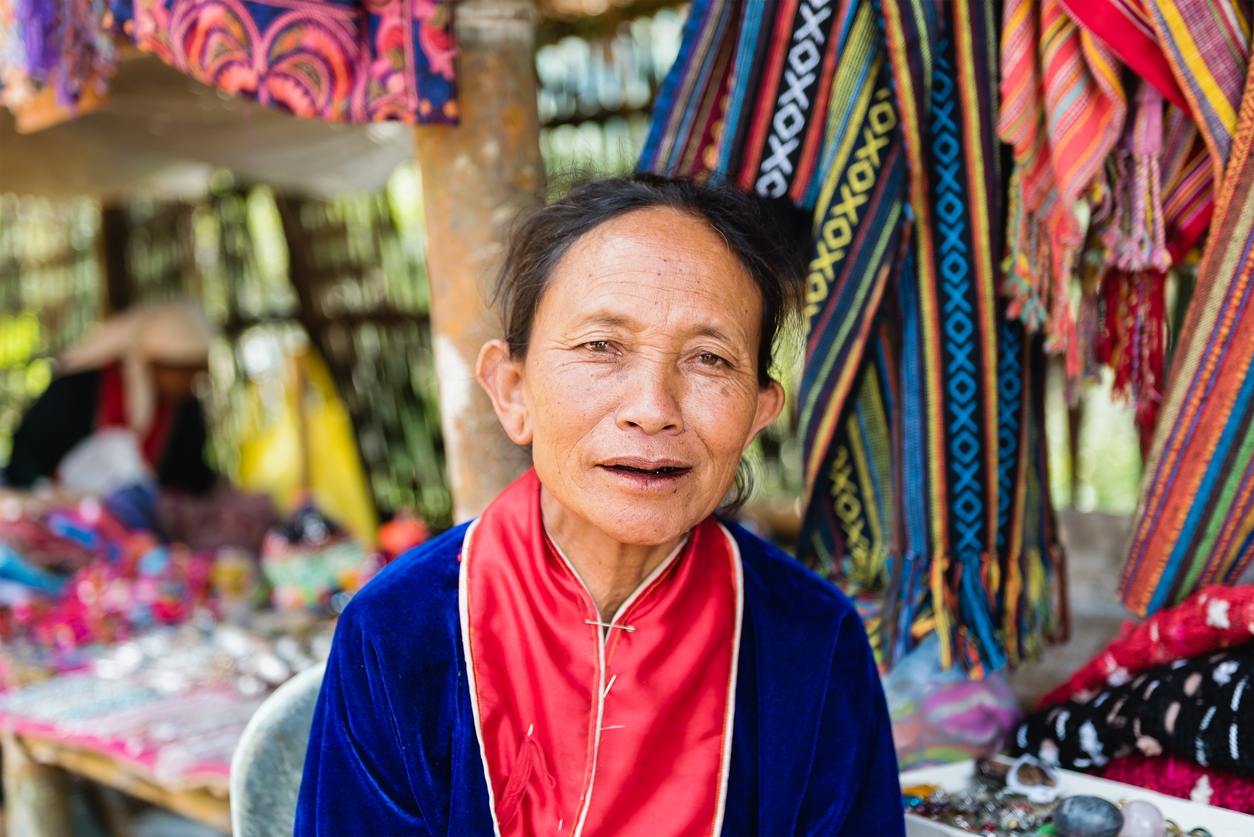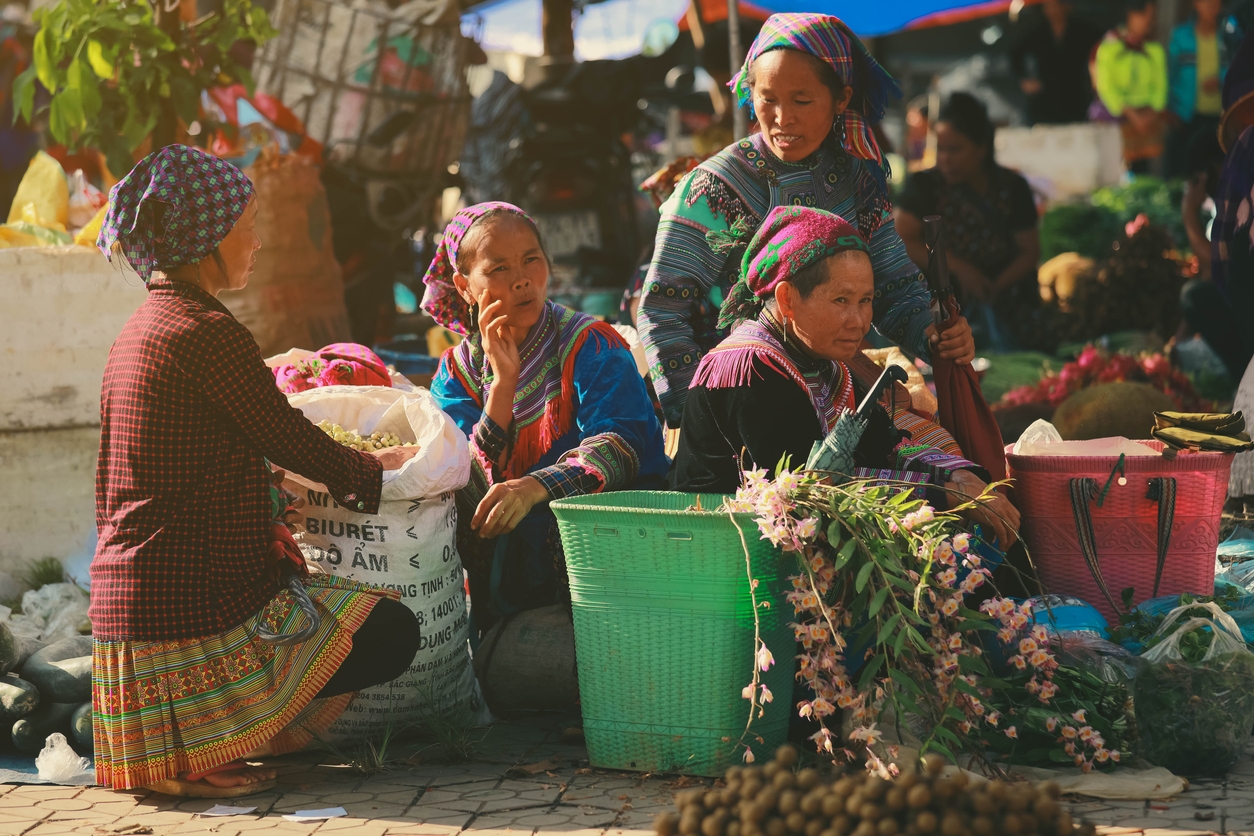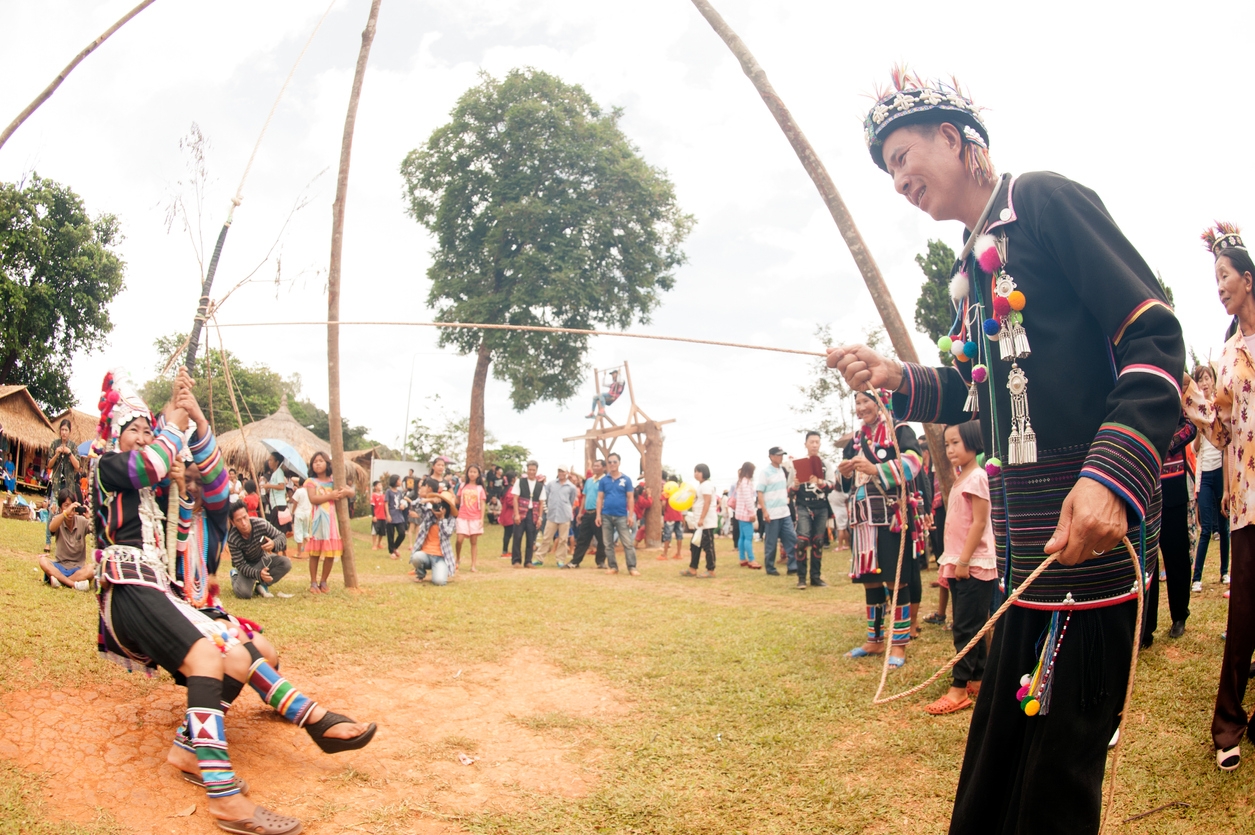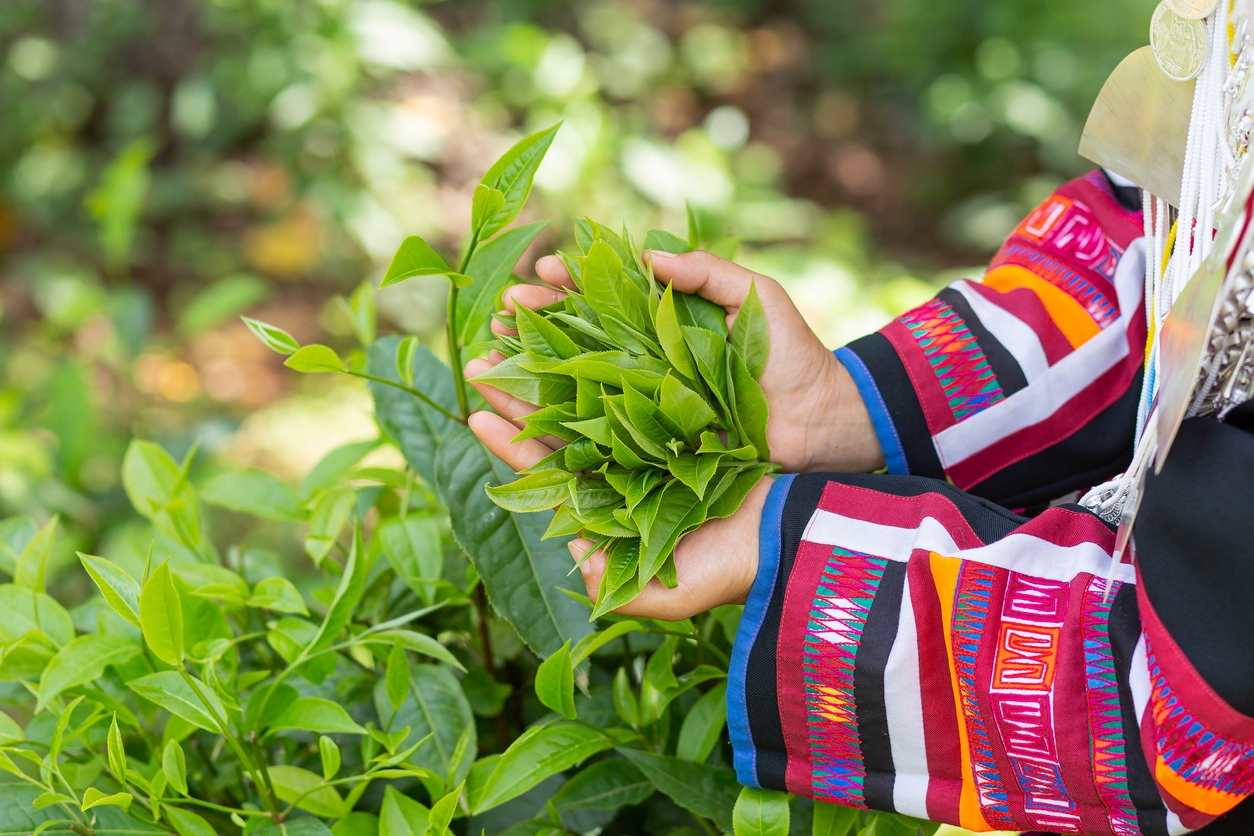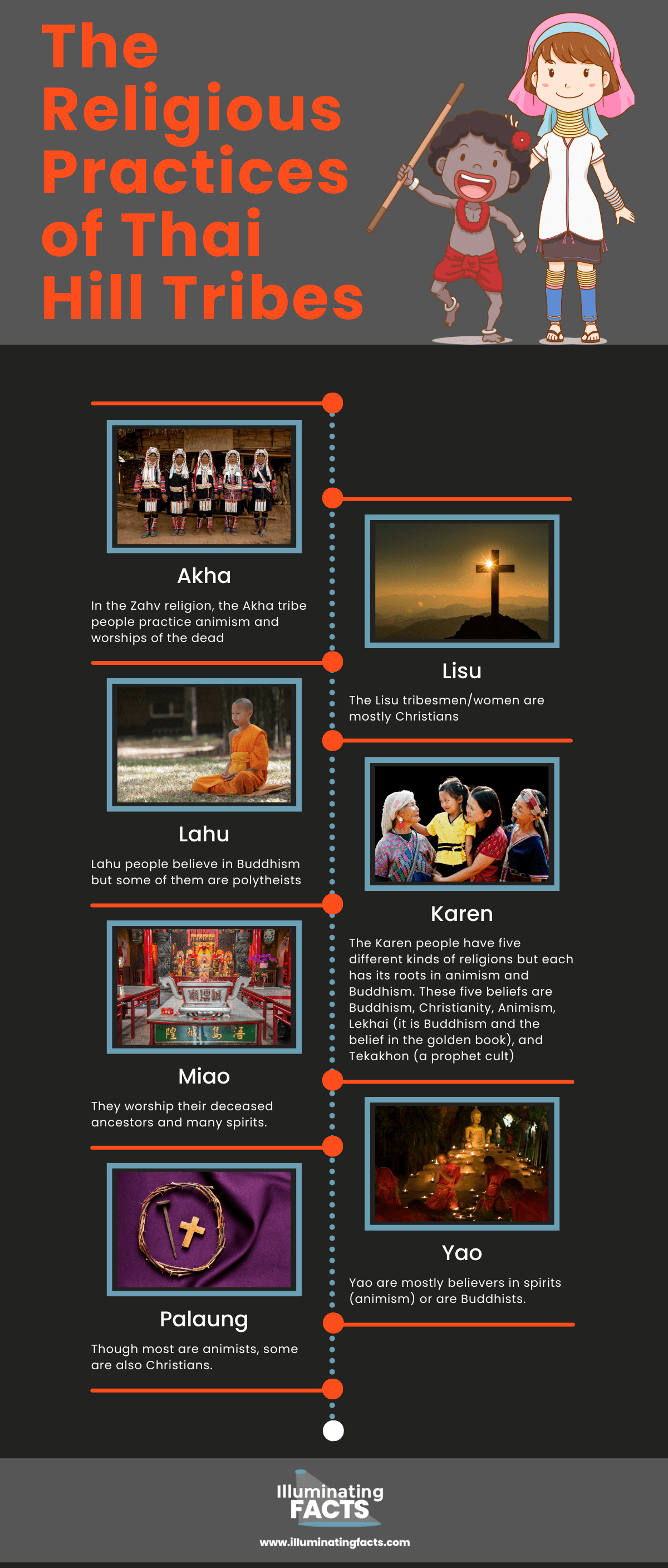Indigenous people and cultures are essential to any region for they are the bearer of history, preserving it as a valued treasure and keeping the traditions alive. Thailand too is one such region where tourists can find not just enchanting landscapes and architectural marvels but unique people belonging to various tribes and indigenous groups. The home to more than 70 ethnic groups, Thailand is a prime example of how cultural cohesion gives the country a welcoming vibe. While all these groups add colors to the country, the hill tribes are the most famous for their unique way of living and colorful attire.
Be sure to check out our in-depth guide to moving to Thailand.
Hill tribes of Thailand reside in the highland areas of Thailand, mainly in the northern and western regions of the country. These groups were migrants who primarily came from China, Myanmar, and Laos but now they make the minority of the country, serving the country as agriculturists. [1]
Major Ethnic Groups Among Thai Hill Tribes
The country has around 70 different ethnic tribes but the 7 most famous hill tribes who had attracted people for their vibrant traditions, beautiful intricately designed jewelry and clothing, and their unusual cultural practices are Akha, Lisu, Lahu, Karen, Hmong, Palaong, and Yao. [2]
Akha
The people of the Akha tribe live in the province of Chiang Rai. This tribe is famous for its staunch belief in spirits. Their villages have the doors by the name of spirit gates and they strongly believe that the gate is the only way through which the world is separated from the world of the spirits. Their reverence for these spirit gates can be understood from the fact that they do not allow anyone to touch them, believing that touching it will be perturbing to the spirits and thus, can bring bad omen to the entire village
Lisu
Lisu people can be differentiated because of their bamboo homes and the bright-colored tunics that their women adorn. They are subdivided into Flowery Lisu and Black Lisu groups. Lisu villages are unique, in that, every village has its own guardian spirit shrine which is usually built at the top side of the village. Though women are prohibited from going there though tourists often go there. Lisu tribe people live in the province of Chiang Mai.
Yao
The aristocrats of the hill tribes, Yao are very sophisticated and respected. They are unique as they are the only tribe to have a religion and a language specifically of their own. Their tribes are further divided into 4 groups called Phan, Cha Sun, Ping Ti, and Bunu and they reside in the provinces of Chiang Rai, Phayao, Nan, Lampang, Chiang Mai, Phitsanulok, and Kamphaeng Phet.
Palaung
These hill tribe people can be found in the district of Chiang Dao and the mountainous region of northern Thailand. Being Buddhists, the people of the Palaung tribe can be easily differentiated because of the temples in their villages. The fashion of their women is also different from those of other hill tribes with a deep red skirt that is usually worn as a petticoat. They also wear beautiful hoops made of silver around their waist as a talisman.
Lahu
Known for their hunting skills, Lahu tribes are unique due to their variety of colored communities, mainly red, white, black, lahu Shelah, and yellow. What makes them different from the rest of the tribes is the equality between both genders and how both, men and women, contribute to having a strong society and community. They live in the provinces of Chiang Rai and Chiang Mai.
Karen
Karen is one of the most organized and sophisticated tribes in the country who dwell in the provinces of Chiang Rai, Chiang Mai, and Mae Hong Son. They are known for their meticulous craft of handmade items which include but are not limited to silver jewelry, bamboo cups, and scarves. What makes them stand out from the crowd is their women with many brass rings around their necks, making their necks longer than the usual necks.
Miao/Hmong
As the people from this tribe originated from China, like Han Chinese, they also worship the dead people. They are further divided into three groups called White, Stripped, and Black Hmong with each group having different kinds of dresses to represent them. Their villages, which are located in the province of Chiang Mai, can be distinguished because of their unique wooden homes on the ground level.
Cultural Practices and Traditions
A visit to Thailand cannot be completed without experiencing the cultural diversity of these ethnic hill tribes. Not only are they different from each other in their cultural practices, but their religions, languages, festivals, and attires are also different from each other. The table below represents the variety of languages, dresses, and festivals unique to each hill tribe.
Hill Tribe | Population | Craft | Language | Clothing |
Akha | 400,000 | Seed, coins and shell craft, applique work, silver ornamentation, bright colored embroidery. [3] | Akha |
|
Lisu | 55,000 | embroidery with stripes of clothes instead of thread. | Tibeto-Burman |
|
Yao | 45,000 | Silver rings, jewelry, and cross stitch | Mienic |
|
Palaung | 4,500-5,000 | Weaving, cotton dyeing, bag stitching | Palé, Rumai, and Shwe |
|
Lahu | 620,000 | Weaving on readle and strap loom | Tibeto-Burman |
|
Karen | 1,000,000 | Embroidery with colored(tie and dye) | S'gaw Karen, Western Pwo Karen, and Eastern Pwo Karen |
|
Miao | 174,000 | Silver Jewelry | Hmongic/Miao languages |
|
The Vibrant Festivals of Hill Tribes
Similar to their attires, the celebrations of hill tribes are full of colors and bling. Most festivals either celebrate their religious ceremonies or the harvest season. From Akha Swing Festival where women swing from height during the rainy season, singing and praying for healthy produce to Lisu Festival which is celebrated at the same time China celebrates its New Year, the festivities give a glimpse of the vibrant traditions of the hill tribe people of Thailand. Other popular festivals of ethnic groups are Hmong New Year which is celebrated during harvest season in November, Lusheng Festival celebrated in March and Sister’s Meal Festival celebrated in April each year.
Agronomics and Hill Tribes
Apart from lives full of colors, the ethnic hill tribesmen and women are skilled farmers with each group focused on cultivating a particular crop. The Akha tribes usually grow, rice, tea, vegetables, coffee, and corn whereas Lisu tribes are more focused on rice and corn plantation along with keeping livestock.[4] Other tribes like Lahu are skilled hunters and Palaung tribesmen normally grow beans and corn. The hard work of these tribesmen and women makes Thailand the third-largest exporter of rice in the world. [5]
The Religious Practices of Hill Tribes
Though most of the hill tribes practice animism, their rituals and forms of worship differ from one tribe to tribe. The table below gives an overview of the religious practices and rituals of the hill tribes.
Tribe | Religion/Rituals |
Akha | In the Zahv religion, the Akha tribe people practice animism and worships of the dead |
Lisu | The Lisu tribesmen/women are mostly Christians |
Lahu | Lahu people believe in Buddhism but some of them are polytheists |
Karen | The Karen people have five different kinds of religions but each has its roots in animism and Buddhism. These five beliefs are Buddhism, Christianity, Animism, Lekhai (it is Buddhism and the belief in the golden book), and Tekakhon (a prophet cult) |
Miao | They worship their deceased ancestors and many spirits. |
Yao | Yao are mostly believers in spirits (animism) or are Buddhists. |
Palaung | Though most are animists, some are also Christians. [6] |
Conclusion
If Thailand is your next vacation, a visit to these hill tribes is a must for full cultural immersion. These people have a unique way to live life, one which is inspiring, at times overwhelming but certainly not boring. Their intricately designed jewelry and beautiful bold-colored clothes speak volumes of their high spirits and full-of-life traditions, something that one should not miss if one wants to have the best cultural experience.
Reference
[1] What should you know about major hill tribes in Thailand. (2023, February 20). Tourism Thailand. https://tourismthailand.in/what-should-you-know-about-major-hill-tribes-in-thailand/
[2] Cultural insights: Hill tribes of Thailand. (2021, November 8). Discova. https://www.discova.com/blog/cultural-insights-hill-tribes-of-thailand/
[3] Thailand: Thaitribal crafts — Global village Nanaimo. (n.d.). Global Village Nanaimo. https://www.globalvillagenanaimo.com/thailand-thaitribal-crafts
[4] Union of hill Tribe villages. (n.d.). Union of Hill Tribe Villages. https://www.longneckkaren.com/akha.php
[5] Thai January rice export volume up 75.2% Y/Y. (2023, February 27). Reuters. https://www.reuters.com/markets/asia/thai-january-rice-export-volume-up-752-yy-ministry-2023-02-27/
[6] North Thailand’s ethnic minorities: The Palaung. (n.d.). Travelfish. https://www.travelfish.org/beginners_detail/thailand/79

